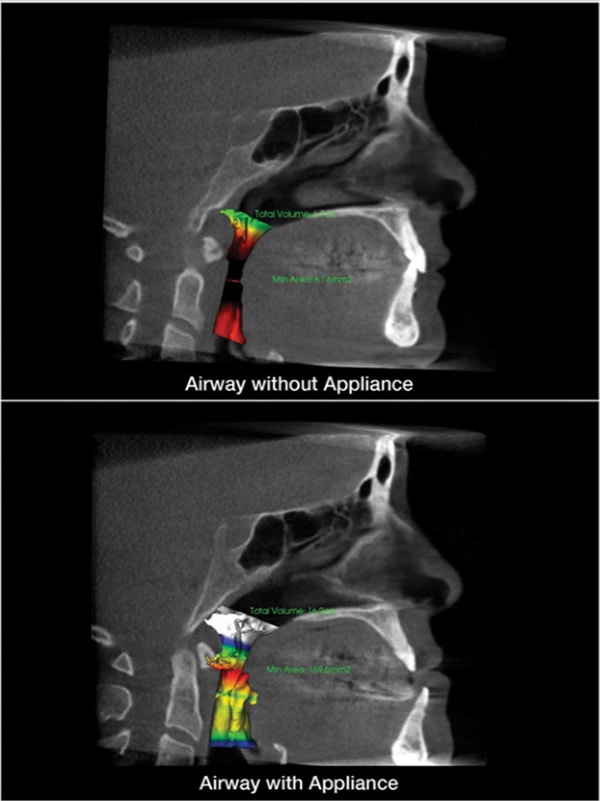The DynaFlex Dorsal® Accu-Fit Appliance
 Could your sleep practice keep up with 500% growth? According to the American Sleep Apnea Association, 22 million Americans suffer from sleep apnea with the vast majority remaining undiagnosed. Frost & Sullivan, a leading consulting and market research firm, anticipate the market for oral appliances will double by the year 2020, with custom oral appliance revenues increasing five-fold during that time period.
Could your sleep practice keep up with 500% growth? According to the American Sleep Apnea Association, 22 million Americans suffer from sleep apnea with the vast majority remaining undiagnosed. Frost & Sullivan, a leading consulting and market research firm, anticipate the market for oral appliances will double by the year 2020, with custom oral appliance revenues increasing five-fold during that time period.
Appliance Selection
Along with the increase in numbers of patients seeking OAT, there has been a surge in the number and variety of oral sleep appliances available to practitioners of dental sleep medicine. With over 140 FDA approved oral sleep appliances currently available, dentists are often frustrated and confused when it comes to determining which appliances are most effective in treating obstructive sleep apnea (OSA), which appliances are most comfortable for their patients, and which appliances are the easiest to deliver, adjust and manage. As both a practitioner of dental sleep medicine and beneficiary of oral appliance therapy for many years, I have personally used nearly a dozen different appliances over the past decade. During that time I have determined seven key criteria that I believe to be absolutely essential in an oral sleep appliance.
First, it must be FDA-approved for treatment of OSA.
Second, it must be extremely durable and of high quality construction such that it will provide the patient many years of nightly use. I personally prefer to avoid vacuum-formed appliances and plastic inter-arch straps that tend to deteriorate both physically and esthetically quite rapidly.
Third, it must be comfortable for the patient. This means as little acrylic and as few moving parts as possible.
Fourth, it must be constructed of two separate parts (maxillary and mandibular) that allow for opening, sipping of water, and casual conversation with a bed partner. Appliances that are fabricated as a single unit, or even two separate parts that are locked together in the anterior are not tolerated as well by some patients, and in some cases even create a sense of claustrophobia.
Fifth, it must maximize tongue space in the palate and between the anterior teeth. While most practitioners understand the importance of mandibular advancement in the treatment of OSA, creation of increased tongue space is often overlooked.
Sixth, it must be adjustable in small increments. I have often found an adjustment of as little as 0.25 mm is all it takes to achieve a successful outcome while minimizing the possibility of long-term bite changes.
And seventh, it must be easy to fit and adjust to the patient’s dentition. With this in mind, the oral sleep appliance I feel best satisfies these criteria at this time is a thermally-fitted dorsal appliance made by DynaFlex laboratory in St. Ann, Missouri.

DynaFlex Dorsal® Accu-Fit Appliance
The appliance (figure 1) is a two-part mandibular advancement device that utilizes the time-tested dorsal design to guide and hold the mandible into the desired protrusive position. Adjustments of as little as 0.1 mm are possible with the adjustable screws embedded in the upper part of the appliance. Typically I use 6-8 mm of anterior opening for the fabrication of my appliances in order to reduce the amount of mandibular protrusion required and accommodate an anterior opening between the upper and lower parts of the appliance to allow for tongue space. 
Appliance Delivery
After years of using appliances that required time-consuming adjustments of acrylic and ball clasps at the delivery appointment, I absolutely love the ease and simplicity of fitting this appliance. Although the appliance comes fit-ready on digitally printed models of the patient’s dentition, we further customize it by heating the thermal acrylic liner material in hot water. Per instructions from DynaFlex, we heat water to a precise 160 degrees using an inexpensive electric kettle that can be programmed for the desired temperature (figure 3) and then pour the water into a disposable paper cup. The appliances are then placed in the heated water for 3-5 seconds to slightly soften the thermal acrylic prior to fitting them in the patient’s mouth (figure 4). Once seated, the appliances are cooled with a few short bursts of air from an air/water syringe and then removed for further cooling in cold water. Following this procedure ensures a perfect fit in a matter of minutes each and every time.


Confirmation of Airway Increase with CBCT
Although all patients undergo a period of titration, using a combination of methods such as audio sleep recordings with smart phone apps such as SnoreLab (iOS and Android), Observer Sleep Scale forms, and changes in Epworth Sleepiness Scale scores, we have found documenting airway volume changes (as well as condylar positions and bite changes) with CBCT scans extremely valuable. Utilizing low dose scans from our i-CAT FLX CBCT we are able to visualize paranasal sinus abnormalities as well as identify and measure airway restrictions. However, it is important to note that an awake, vertical airway is not the same as a sleeping, horizontal airway. Consequently, CBCT volume changes seen with mandibular advancement therapy should only be considered a small part of the total sleep disorder picture. In every case, once titration seems to have accomplished the intended outcome, follow-up PSGs or HSTs are always the final determinate of success.
Summary
Whether you’re considering entering the rewarding field of dental sleep medicine, or just reevaluating the sleep appliances you presently use, I highly recommend the DynaFlex Dorsal® Accu-Fit Appliance for your practice.




